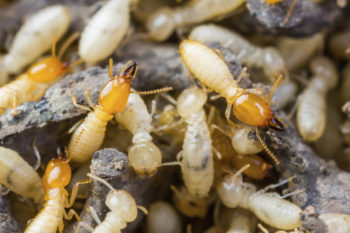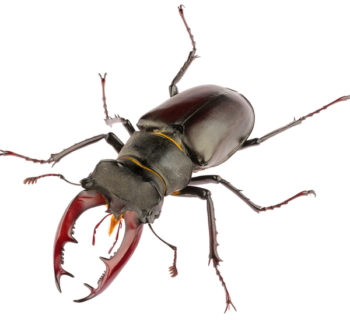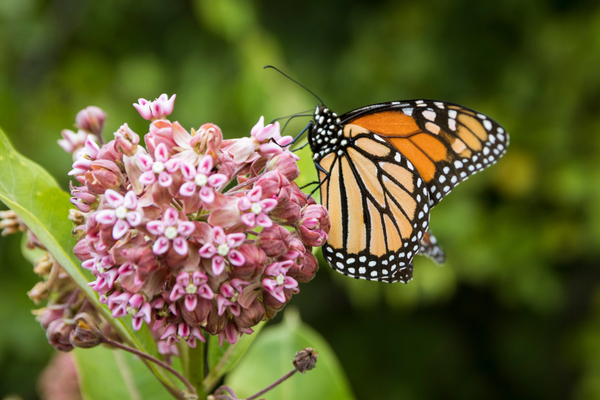
Once, monarch butterflies fluttered in huge droves across Windsor and Essex County in July. Unfortunately, that’s no longer the case. For several years, monarch butterflies have become a rare sight, even during July and along their former flight paths.
It’s not just Windsor or Essex County, either. Scientific evidence from all over points to a disturbing trend: monarch butterflies are disappearing. This major disruption to nature is causing quite a bit concern among Monarch watchers, naturalists, academics, and enthusiasts alike. Everyone wants to know: where are the monarch butterflies?
What Are Monarch Butterflies?
A monarch butterfly is a milkweed butterfly that lays eggs on different milkweeds, which also serve as food for the larvae. The striking orange and black markings, and friendly behavior of monarch butterflies are hard to miss.
The inherent ability of these butterflies to navigate so easily across continents has inspired researchers. Volunteers for the non-profit organization “Monarch Watch” safely catch, tag, and release monarch butterflies during migratory periods. If other volunteers ever re-capture a “tagged” butterfly, they’ll be able to study its migratory patterns.
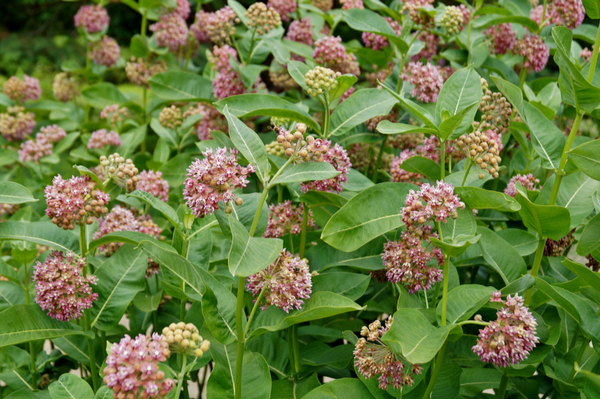
What’s Happening to the Monarchs?
This summer, southern Ontario hasn’t witnessed the influx of monarch butterflies that it normally does. Founder-director of Monarch Watch and professor in the department of ecology and evolutionary biology at the University of Kansas Chip Taylor, says that monarchs have been slower to migrate in previous years. His findings are corroborated by reports from Windsor’s Ojibway Nature Centre, which counted only one adult monarch during a recent annual butterfly count.
Michigan Butterflies Project Executive director Holli Ward, who specializes in the study of monarch butterflies, says she has seen very few of the brightly-colored species relative to previous years. Even planing hundreds of butterfly-attracting milkweed stalks hasn’t seemed to help. Monarchs lay their eggs only on milkweeds. The poison in milkweeds protects them from leaf-eating insects and animals. By storing cardenolide aglycones milkweed poison inside their bodies, monarch butterflies can use it as a defensive tool. This poison keeps wasps and bees away but often fails to deter their larger predators..
Where Have the Monarch Butterflies Gone?
Taylor blames monarch’s recent struggles on habitat loss. Monarchs require milkweeds to survive, and milkweeds have been in decline in the US and Mexico. Deforestation in Mexico has devastated the monarchs’ typical overwintering environments. Up north, Droughts and record-high temperatures have made much of the territory where milkweed usually grows inhospitable to the delicate plant as well. As a consequence, monarchs have fewer shelters and food sources all year. In Mexico, the butterflies struggle to find their typical overwintering nesting and feeding habitats. Then, when monarchs fly up to the US in summer, they can’t find enough milkweed to eat to sustain their mating and egg-laying.
Unfortunately, habitat destruction isn’t the only plights facing milkweed, either. The proliferation of herbicide-tolerant genetically modified corn crops and soybeans have also contributed to wiping out the plant in its native habitat. Milkweed naturally grows amongst farming crops. When farmers spray their herbicide-tolerant crops with an herbicide called glyphosate to protect them, the glyphosate kills the non-resistant milkweed.
Finally, unseasonably cold spring weather in Texas may also affect monarchs’ eggs. Eggs can’t survive these unseasonably cold temperatures, and monarchs also have less time to mate. In short, there are several different phenomena affecting monarchs and their environments right now, but they all add up to fewer monarch habitats. As monarch habitats disappear, monarchs will disappear with them.
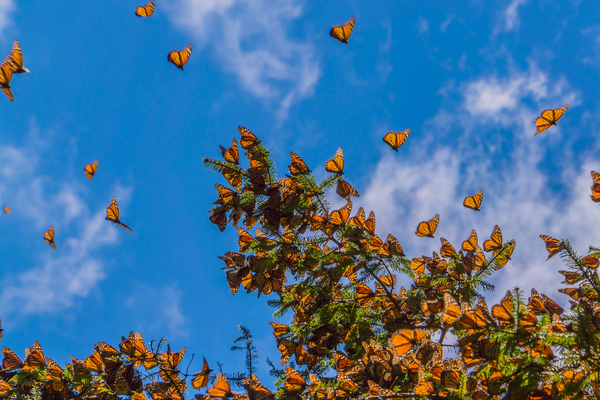
What Happens If Monarch Butterflies Go Extinct?
If the loss of habitat persists, we may stop seeing monarch butterflies altogether. Obviously, this would be heartbreaking, but it would also be an environmental disaster. Monarch butterflies are extremely important pollinators, especially during their annual migrations. Up to 75% of the world’s crops depend on insect-based pollination to grow. The extinction of monarchs could make it far more difficult to grow apples, chocolate, coffee, and many other foods. Obviously, losing these crops would affect the livelihood of millions of people. Crop scarcity will also likely affect the price and availability of a whole host of other staple foods, which will affect even more people all over the world.
Monarch pollination and migration also affects each of the ecosystems they inhabit in incalculable other ways, as well. Without monarch pollination, other flowers and plants could become endangered. Without monarchs as a source of prey, predators could be forced the seek different food sources or could die out. Losing monarchs would have nearly incalculable effects on a wide range of ecosystems all over North America and Mexico. The truth is, we don’t even know how much monarch extinction would affect the world. We only know that it would be significant… and bad.
What Can We Do To Prevent Monarch Butterfly Disappearance?
Preventing monarch extinction on a worldwide scale will require a coordinated national response. Sweet Briar College professor and Biology professor and monarch migration expert Lincoln Brower suggests taking better care of milkweed growing on the sides of highways. Properly managing highways to promote milkweed growth instead of destroying it would substantially help restore healthy environments for monarchs. He also suggests farmers refrain from spraying 100% of their fields with herbicide to preserve some natural milkweed.
Individuals may not be able to directly affect national change, but that doesn’t mean we have no way of helping the monarchs. You could plant milkweed of your own in your garden and yard. Building a “pollinator” garden is easy, fun, and very helpful for local monarchs! Monarchs need milkweed more than anything, so any moment helps, no matter how small! You can also become an advocate for monarchs by supporting conservation efforts. Learn more about how you can help save the monarch with this special pamphlet from the US Fish and Wildlife Service.
The monarch butterfly situation is dire, but that’s no reason to give up hope. On the contrary, protecting and advocating for monarchs is more important now than ever. If we want to keep seeing monarch butterflies in the years to come, we’ll all have to work together.
To find out more about how you can help the monarchs, check out Monarchwatch.org and get involved in your local programs. Thank you for doing your part! Together, we can keep monarch butterflies from disappearing!


